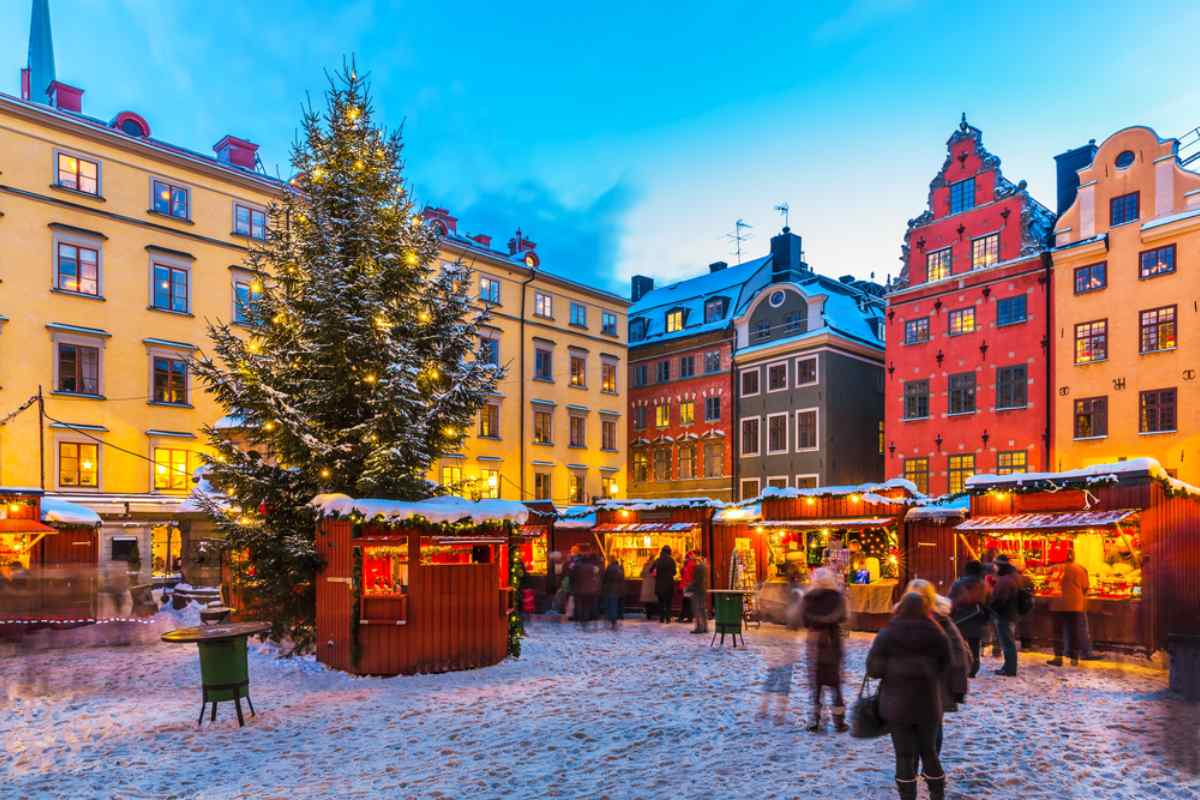When it comes to the names "Switzerland" and "Sweden," confusion is not uncommon. Despite their similar-sounding names, these two countries are vastly different in terms of geography, culture, language, and even climate. This article aims to clear up the confusion by highlighting the key differences between Swiss and Swedish, providing an entertaining and informative comparison for those who might mix up these two distinct nations.
Geography: Where Are They?
Switzerland: The Land of Mountains
Switzerland is a small, landlocked country in the heart of Europe. Known for its stunning Alpine landscapes, Switzerland is bordered by Germany, France, Italy, Austria, and Liechtenstein. The country is famous for its mountains, with the Alps covering about 60% of its territory. This mountainous terrain makes Switzerland a top destination for skiing, hiking, and other outdoor activities.
Sweden: The Scandinavian Giant
Sweden, on the other hand, is located in Northern Europe, forming part of the Scandinavian Peninsula. Bordered by Norway to the west and Finland to the northeast, Sweden is the largest country in Scandinavia. Unlike Switzerland, Sweden is characterized by vast forests, numerous lakes, and a lengthy coastline along the Baltic Sea. Sweden's landscape is less mountainous but equally beautiful, offering opportunities for outdoor activities like hiking, sailing, and fishing.
Key Difference: While Switzerland is known for its Alps and being landlocked, Sweden is recognized for its extensive forests, lakes, and long coastline.

Language: What Do They Speak?
Switzerland: A Multilingual Nation
Switzerland is unique in that it has four official languages: German, French, Italian, and Romansh. The majority of Swiss people speak German (about 63%), followed by French (around 23%), and Italian (8%). Romansh, spoken by a small percentage of the population, is mainly used in the canton of Graubünden. This linguistic diversity reflects Switzerland's multicultural makeup and its position at the crossroads of several major European cultures.
Sweden: Unified in Swedish
Sweden, in contrast, has just one official language: Swedish. Swedish is a North Germanic language, closely related to Norwegian and Danish. While most Swedes are fluent in English, Swedish is the language of daily life, government, and media. The consistency of language across the country helps maintain a strong national identity.
Key Difference: Switzerland has four official languages, reflecting its cultural diversity, while Sweden primarily speaks Swedish.

Culture: Traditions and Way of Life
Swiss Culture: A Blend of Influences
Swiss culture is heavily influenced by the country’s linguistic regions. German, French, and Italian traditions coexist within Switzerland, creating a rich tapestry of cultural practices. For example, Swiss cuisine varies significantly by region, with German-speaking areas favoring dishes like fondue and rösti, while Italian-speaking areas enjoy pasta and risotto. Switzerland is also famous for its precision, neutrality, and strong banking tradition.
Swedish Culture: Simplicity and Lagom
Swedish culture is known for its emphasis on simplicity, equality, and the concept of "lagom," meaning "just the right amount." Swedes value work-life balance, environmental sustainability, and social welfare. Swedish traditions include Midsummer celebrations, where people dance around maypoles and wear flower crowns, and fika, the practice of enjoying coffee and pastries with friends. Swedish design, characterized by minimalism and functionality, has also gained international acclaim.
Key Difference: Swiss culture is a mix of German, French, and Italian influences, while Swedish culture emphasizes simplicity, equality, and environmental consciousness.

Economy: Wealth and Industry
Switzerland: Banking and Chocolate
Switzerland is one of the wealthiest countries in the world, with a strong economy driven by finance, pharmaceuticals, and high-end manufacturing. Swiss banks are renowned for their confidentiality and stability, attracting clients from all over the globe. Switzerland is also famous for its high-quality chocolate, luxury watches, and precision engineering. The country’s neutral stance in international conflicts has contributed to its economic stability and prosperity.
Sweden: Innovation and Sustainability
Sweden, while also wealthy, has a different economic focus. The Swedish economy is driven by innovation, technology, and a strong welfare state. Sweden is home to global brands like IKEA, Volvo, and Spotify, reflecting its emphasis on design, engineering, and digital technology. Sweden is also a leader in environmental sustainability, with ambitious goals for reducing carbon emissions and promoting renewable energy.
Key Difference: Switzerland's economy is known for banking, chocolate, and luxury goods, while Sweden excels in innovation, technology, and sustainability.

Climate: Snow or Sunshine?
Switzerland: Alpine Winters
Switzerland's climate is heavily influenced by its mountainous terrain. Winters in Switzerland are cold and snowy, especially in the Alps, making it a premier destination for winter sports. Summers are mild, with warm days and cool nights, particularly in the valleys and lower elevations. The varied climate allows for year-round outdoor activities, from skiing in winter to hiking and cycling in summer.
Sweden: Seasonal Extremes
Sweden experiences a range of climates, from the temperate south to the subarctic north. Winters in Sweden can be long and harsh, particularly in the northern regions, where the sun may not rise for weeks during the polar night. Conversely, summers in Sweden are marked by long daylight hours, especially in the north, where the Midnight Sun provides 24 hours of daylight. The country’s climate is ideal for both winter sports and summer activities like boating and fishing.
Key Difference: Switzerland is known for its snowy winters and mild summers, while Sweden experiences extreme seasonal changes, with long, dark winters and extended daylight in summer.

Embrace the Differences: Swiss and Swedish Adventures Await
While Switzerland and Sweden may sound similar, they offer entirely different experiences. Whether you're drawn to the snowy peaks of Switzerland or the vast forests and lakes of Sweden, both countries have something unique to offer. For those interested in exploring Sweden’s beautiful landscapes, renting a caravan from Campervan Sweden allows you to experience the country’s natural beauty and cultural heritage at your own pace.
Start planning your journey today and discover the distinct charms of these two fascinating European destinations!
Is Switzerland in Sweden? And Other FAQs
1. Is Switzerland in Sweden?
No, Switzerland and Sweden are two entirely different countries. Switzerland is located in Central Europe, while Sweden is in Northern Europe.
2. Are Swiss and Swedish people the same?
No, Swiss people are from Switzerland, and Swedish people are from Sweden. They have distinct languages, cultures, and traditions.
3. Is Swedish food the same as Swiss food?
No, Swedish and Swiss cuisines are different. Swedish food includes dishes like meatballs and gravlax, while Swiss food is known for fondue and raclette.
4. Is Sweden near Switzerland?
Sweden and Switzerland are not geographically close. They are separated by several countries, including Germany and Austria.
5. Is Switzerland part of Scandinavia?
No, Switzerland is not part of Scandinavia. Scandinavia includes Sweden, Norway, and Denmark.


 By
By








